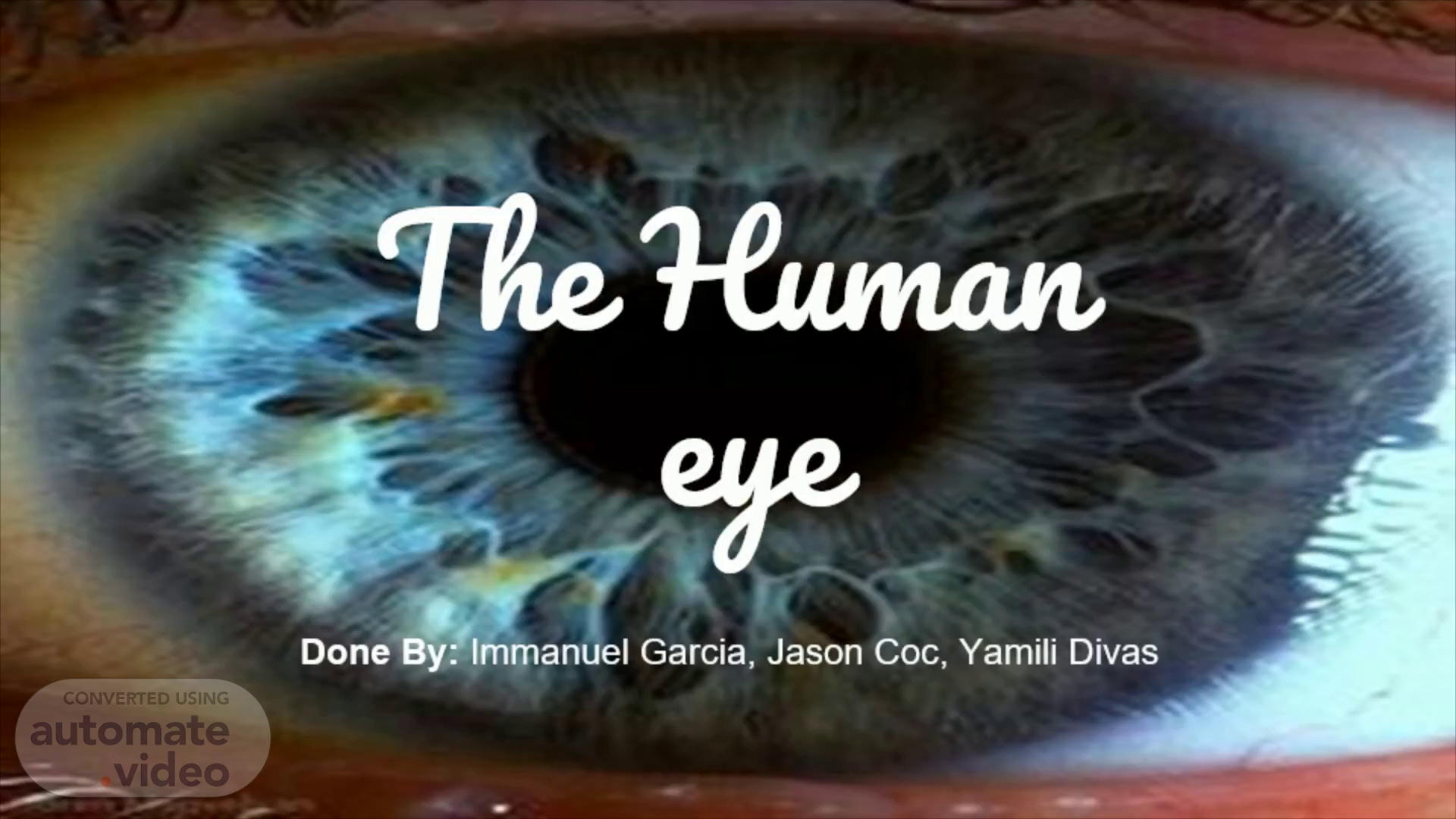Page 1 (0s)
The Human eye. Done By: Immanuel Garcia, Jason Coc, Yamili Divas.
Page 2 (8s)
opTlK the dl"erence Caseboun. The Human Eye Diagram.
Page 3 (15s)
Functions of The Eye.
Page 4 (21s)
Functions. Eyebrows The purpose of our eyebrows is to keep our eyes clean and clear. They keep moisture from perspiration and rain out of our eyes, allowing us to keep our vision consistent. Eyelids The eyelid protects the cornea, disperses the mucus film throughout the ocular surface, eliminates debris, and plays a critical role in the production of mucus film and cornea immunologic protection. Eyelashes particles are kept out of the sensitive eye tissues by the eyelashes. Eyelashes collect some airborne debris when the eyes are open, but when they are closed, they provide an almost impenetrable barrier against external irritants in the eye. Tear Gland Tear glands, also known as lacrimal glands, are positioned above the eyeball and continually provide tear fluid that is smeared across the surface of your eye when you blink. Excess fluid seeps into the nose through the tear ducts..
Page 5 (59s)
Pupil The function of the pupil to control the amount of light entering the eye. Iris By opening and shutting the pupil, the iris regulates the quantity of light that enters the eye. To modify the size of the pupil, the iris utilizes muscles. These muscles can dilate (make the pupil wider) or constrict (make the pupil smaller) the amount of light that enters the eye. Sclera It supports the eyeball and helps it maintain its form..
Page 6 (1m 22s)
T he Process of Accommodation.
Page 7 (1m 28s)
The Process of Accommodation. Accommodation The changes that take place in the eyes that allow us to see objects at different distances. When the eye is focused on different objects at different distances. There are changes that take place internally inside the eye in order for it to stay focused. This process is called accommodation . The eye does this by changing the shape of the lens inside of it. The eye can do this since it is made up of a special elastic tissue called elastic crystalline protein ..
Page 8 (1m 53s)
The Process of Accommodation - Cont’d. When the eyes are focused at a distant object, the ciliary muscles relax , the suspensory ligaments become stretched and the lens gets flattened, stretching the suspensory ligaments. When the eyes are focused at a nearby object, the ciliary muscles contract , the suspensory ligaments become slack and the elastic lens gets shaped into a more convex form..
Page 9 (2m 12s)
The Process of How We See.
Page 10 (2m 19s)
Light enters the eye through the cornea, passes through the pupil and then hits the lens. Light then passes through the vitreous humor. Finally the light reaches the retina where light gets converted into electrical pulses by the rods (sense b/w) and cones (sense color) . These cells are what react to the light and produce the electrical impulses that get passed to the optic nerve. These images are inverted. The optic nerve then carry signals to the visual cortex of the brain where the signals turns into images..
Page 11 (2m 46s)
The Effect of Pupil Size.
Page 12 (2m 53s)
Pupil Iris Iris Pupil. The Effect of Pupil Size. When pupils dilate they get bigger and when pupils constrict they get smaller. Pupils dilate when a person is in a dark place or in dim light to let in as much light as possible. Pupils constrict when there is a lot of light, so that light does not enter the eye too much because it will damage the eye. The Iris is the muscle that decides when the pupil should dilate or constrict..
Page 13 (3m 18s)
Depth of focus.
Page 14 (3m 24s)
Depth Of Focus. The range of distances of the image behind a camera lens or other image - forming device measured along the axis of the device throughout which the image has acceptable sharpness. The minimum estimate for depth of field obtained under optimum conditions was ± 0.3 D at a pupil diameter of 3 mm. Depth of focus is a lens optics concept that measures the tolerance of placement of the image plane (the film plane in a camera) in relation to the lens. In a camera, depth of focus indicates the tolerance of the film's displacement within the camera and is therefore sometimes referred to as "lens-to-film tolerance"..
Page 15 (3m 52s)
END.
